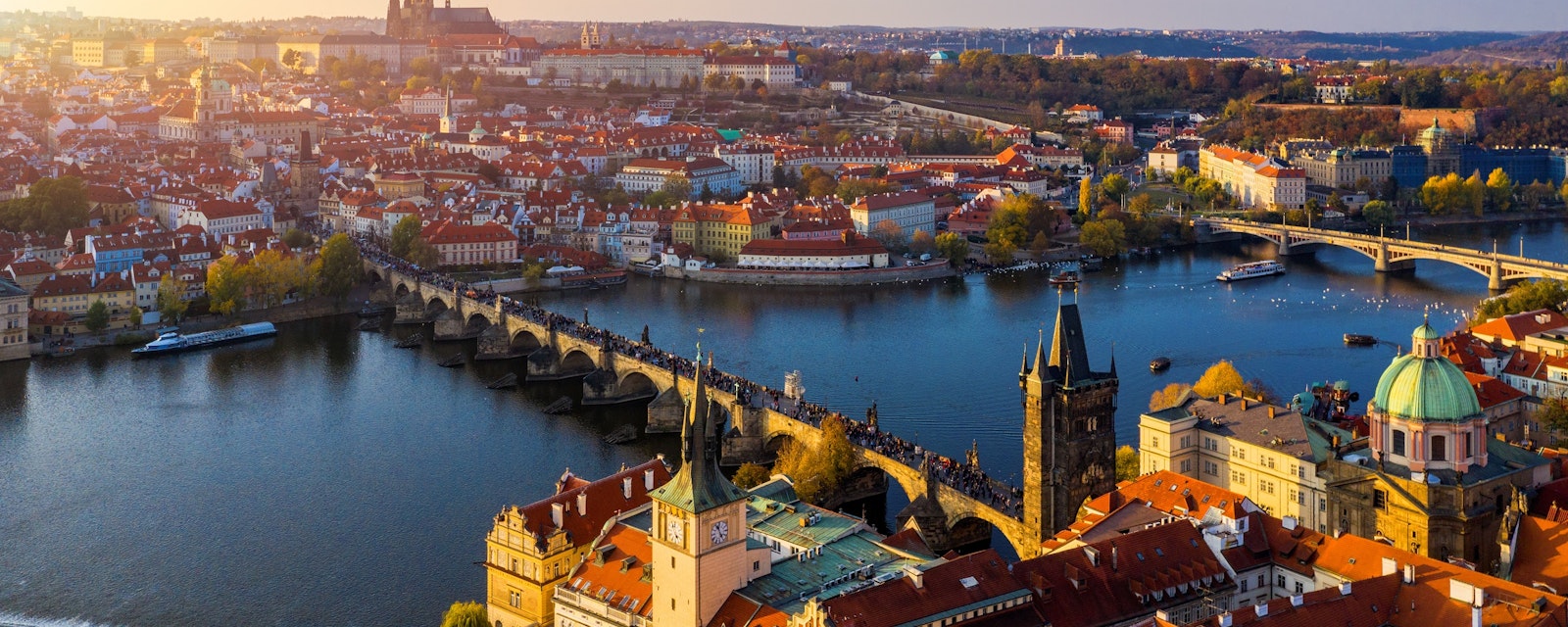The heavily industrialized, trade-dependent, and energy-intensive economies in Central and Eastern Europe (CEE) are particularly vulnerable to high energy prices, and economic slowdown in Western Europe. A total shutoff of Russian gas flows to Europe would likely lead to highly disruptive gas shortages in countries like Hungary or Serbia. The extent to which CEE governments are effective in shielding vulnerable households and sustaining business activity during the coming months will be an important factor shaping political trends in the region.
Energy Systems Under Strain
Historically, the CEE countries have been heavily reliant on energy supplies from Russia. In 2020, the share of Russian gas accounted for more than 75% of total gas imports in the Czech Republic, Latvia, Hungary, Slovakia, and Bulgaria. Amid rising tensions between Moscow and the West in recent years, multiple CEE countries have taken steps to lower their dependence on Russian supplies by investing in regional interconnections, LNG import facilities, and renewable energy. More recently, in the context of steadily declining gas supplies from Russia, governments have been racing to fill up gas storage facilities and roll out national energy efficiency and savings plans.
Barring a total shutoff of Russian gas flows to Europe, the abovementioned measures will likely allow most of the CEE-based EU member states to muddle through the coming winter without highly disruptive shortages. A potential exception is Bulgaria, which has comparatively lower gas storage levels (currently at only 65% full compared to the EU average of 82%) and so far has failed to secure sufficient LNG imports.
However, a complete halt in remaining Russian gas deliveries through Ukraine and the TurkStream pipeline would present major challenges for countries like Hungary and Serbia. They are heavily reliant on Russian gas supplies and have limited access to alternatives. The risk of this scenario continues to escalate with Moscow threatening to cut all energy supplies to Europe if Brussels proceeds with the proposed price cap on Russian gas imports.
Considering Russia has threatened to retaliate if Europe further tightens restrictions on any Russian energy imports, risks to regional energy security extend well beyond gas. A potential halt in supplies of Russian oil and refined products to Hungary, Slovakia, and the Czech Republic – which are exempt from the EU-wide oil embargo – could pose major challenges, especially in the near term. While these countries do have access to alternative supplies (for example via Poland or Croatia), it would take time to reorient the supply chains and adapt their refineries, which are designed to process Russian Urals, to accommodate a wider range of crudes arriving from the Middle East, West Africa, the North Sea, and the US.
Economies Vulnerable to Energy and Demand Shocks
Even if the CEE countries manage to avoid major gas supply shortages in the coming winter, their economies will certainly be impacted by high energy prices. According to Eurostat, the Czech Republic, Slovenia, Poland, Slovakia, Romania, Hungary, and Lithuania rank among the top ten most industrialized economies in the EU. For example, industry accounts for 29% of total gross value added and the same share of employment in the Czech Republic, compared to EU-wide averages of 20% and 16% respectively. Multiple CEE economies also lead the EU in terms of energy intensity, which will likely weigh on company profits and could lead to closures in energy-intensive sectors. For example, high energy prices have already led to a closure of an aluminum production facility employing around 300 full-time employees in Slovakia.
Compounding high energy price concerns, the economic slowdown in Western Europe and an accompanying decline in consumer demand will add to the strain on export-dependent CEE economies. Germany is the single largest trading partner (both in terms of exports and imports) of all four Visegrad Four states and Western European markets are among the key trade partners of the Baltic and Balkan countries.
Since the beginning of the year, many governments in the region have been rolling out various support packages to cushion the impact of soaring inflation on consumers. With the heating season approaching and energy prices remaining volatile, these measures are now being supplemented by energy-specific measures, including tariff caps (Hungary, Slovakia, Romania) VAT cuts for energy (Croatia, Poland) as well as targeted subsidies for households and businesses (Bulgaria, the Czech Republic, Lithuania, Poland, Slovenia). Besides national support measures – often financed by windfall/solidarity taxes – many CEE leaders are awaiting EU-wide solutions.
Political Implications
The inter-related energy and cost of living crises have dominated the CEE political agenda and exacerbated underlying political rivalries, prompting a government collapse in Bulgaria, a vote of no confidence in Petr Fiala’s government in the Czech Republic, and the emergence of a minority government in Slovakia. In other countries, the governing parties are scrambling to address mounting pressures on households and businesses without destabilizing public finances and investor confidence. The extent to which the governments across the region are effective in shielding vulnerable households and sustaining business activity will be an important factor shaping political trends in the region.
A failure to address economic challenges faced by vulnerable population groups could increase socio-economic inequalities and provide fertile ground for the rise of populist political forces, some of which are openly pro-Russian. A large anti-government protest last week organized by extremist and fringe groups in Prague could be seen as an early warning sign. The upcoming parliamentary elections in Latvia and Bulgaria in early October will provide an early indication of whether such political forces are gaining momentum.




